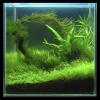- О проекте
- Фотогалерея
- Аквариумные беспозвоночные
- Аквариумные растения
- Аквариумные рыбы
- Альбомы посетителей сайта
- Рептилии и амфибии
- Выставки, встречи, конкурсы
- Магазины, разводни, домашние хозяйства
- Клуб аквариумистов "Хемихромис", г. Петрозаводск
- хозяйство Владимира Челнокова
- Аквариумы Кузьмичева Кирилла
- Дискусоразводня “С.К.А.Т.” С.И.Горюшкина
- Зоомагазин «Бетховен» г.Армавир
- аквариум Лики Аверкиевой
- аквариум Юли из Жаворонок
- аквариум Яны И.
- дома у Михаила Волкова
- зоомагазин Зеленая игуана
- карантинная база Андрея Чурилова
- коллекция Евгения Цигельницкого
- коллекция Константина Шидловского
- разводня Александра Березина
- разводня Владимира Сторожева
- рыборазводня АкваЭкзотика из Лыткарино
- хозяйство Алексея Бринева
- Разные комбинации ламп Hagen
- Сингапурский каталог растений
- надо разбирать
- Библиотека
- Форум
- Правила сайта
- Поиск
Vinegar Eels
Статья про культивацию уксусной угрицы Turbatrix aceti в яблочном уксусе. Согласно автору, уксусная угрица и обычная нематода, культивируемая на овсяном толокне (Anguillula silusiae) это совершенно разные черви.
Vinegar Eels: A Better "First" Food For Smaller Fry
One of the big headaches in breeding tropical fish is finding adequate foods for fry. especially "first" foods. Dry foods just won't cut it. On the other hand, live foods can be complicated, time consuming, and often not very reliable. Yet, "live" organisms are the only real answer. But, there are not enough types available. So, when another food comes on the scene, it is something good to know about. One such organism is Turbairix aceti, the Vinegar Eel (also known as "Micro Eel," "Eel Worm," or "Wine Eel"). This little animal is nothing new. but few aquarists know much about it -- fewer, still, use it as a food supplement. Yet, Turbairix aceti has far fewer of the prejudicial qualities associated with other live foods commonly in use. But, perhaps the best way to tell you about this interesting organism is to compare it to what is currently available.
The two such foods most often encountered commercially are the Brine Shrimp, Artemia salina, and the Microworm, Anguillula silusiae. Brine Shrimp, used in the hatching form called nauplii, have the important advantage of being free-swimming. Microworms. used in their natural state, are somewhat less so. Although there has been some question as to the way into the fry.
These foods also show their shortcomings in the propagation set-up. Brine Shrimp nauplii do best exactly at 82°F in one-gallon jars with high aeration. However, the smallest aquarium heater available is currently 25 watts — five times too large. Aside from the fact that "runaway" heaters happen all too often, this system calls for constant monitoring and adjustment to maintain control, and should the hobbyist remove the heater for any reason (say to harvest shrimp), the process must be started all over again.
Microworms present the other side of the coin because they are difficult to harvest in any quantity. They are best propagated in a wet medium of cornmeal and yeast which is kept in the refrigerator in small containers. The worms make their way up the sides of the container in a thin line which is gently scraped off for use. There are. of course, plenty of worms in the medium, itself, but what medium you pick up. ultimately adds to the pollution problem. If that were not enough, mold attacks can quickly destroy the colony. Finally, neither set-up is stable; either could go "sour" at any time for a number of reasons. Taken all-in-all, the propagation of these two foods is time consuming - and a bit chancy.
This brings us to the Vinegar Eel which should give us something better in the way of a live food. These organisms have few of the drawbacks generally associated with other live foods, including those mentioned above. In contrast, they are free-swimming, virtually maintenance free, and they will last almost indefinitely in the fry tank (although they will not breed there). Best of all, they are a much smaller 500 to 750 microns in length (.5 to .75mm).
Vinegar Eels were first discovered in leftover wine and vinegar casks. I have no idea how they got there, but my own theory is that it has something to do with the Magna Carta. In any case, coming from where they do, they are "phototaxic" which means they don't like light. With that in mind, propagation is easy enough.
 |
 |
|
| Propagation set-up (left to right): vinegar, distilled water, trash bag, propagation jar, apple slices, and culture. | Harvesting set-up (left to right): plastic funnel, siphon hose, one quart jar, propagation jar, and pH tester. |
The Set-up -- This is what you need to set up one gallon of Vinegar Eel solution:
• one 1/2-galIon of distilled water.
• two quarts of vinegar;
• one l-gallon glass jar;
• small black plastic trash bag to fit jar. one small apple.
• Vinegar Eel culture. (The classified section lists several suppliers including L.F.S. Cultures whose products I have used for several years with good results. "Cultures include instructions and good backup, and usually run around $5.00 each. RM.)
Mix the distilled water and vinegar together to form 1 gallon of 50-50 solution. The vinegar should not be white or flavored. To this solution, add the apple, peeled and sliced (in chunks). For better viewing I suggest slices from a more dense apple so that the slices will settle to the bottom of the jar. With this part completed, set the jar out in some brightly lit place. In a week or two, the solution will become "cloudy" with bacteria (the bacteria feed on the apple slices, and the Vinegar Eels feed on the bacteria.
With the bacteria going strong, introduce the "eel" culture, wrap the jar with the black plastic trash bag (to seal out light) and set it away. If everything comes out right, your culture should be SRO (Standing Room Only) in three or four weeks. This set-up can last for many months, needing nothing more than darkness and an occasional apple.

»
- 2639 просмотров





